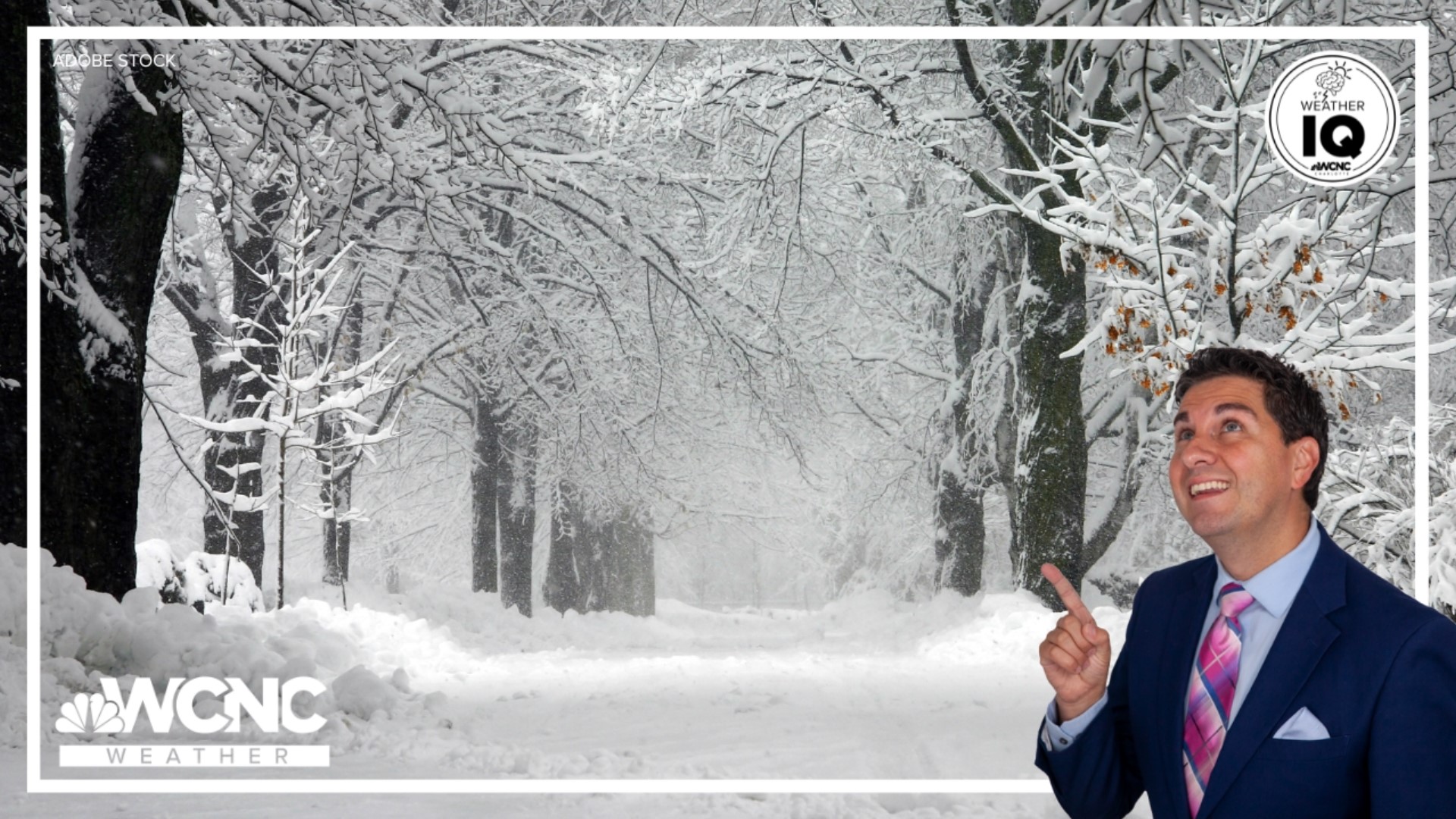BOONE, N.C. — Winter weather can be tranquil, a picturesque landscape, but it can also bring white-out conditions. Let’s go through all of the different types of winter weather in the Weather IQ.
Snow:
Falling snow has several names. Snow flurries means that just a little snow is falling over a short period of time. A light dusting is the most you will see.
Snow showers can vary in intensity. They are heavier than flurries, but these also don’t last long. Snow accumulations can range from a coating to a couple of inches.
🌩️ If you like weather, watch Brad Panovich and the WCNC Charlotte Weather Team on their Emmy Award-winning Weather IQ YouTube channel. 🎥
The heaviest snow bands are called snow squalls. Snow squalls are brief but intense snow showers that accompany gustier winds. Snow accumulations can be significant.
These are most common around the Great Lakes during Lake effect storms.
A snow storm can bring a combination of snow showers and snow squalls across a longer time period. Strong winds can blow snow, cause snow drifts, reduce visibilities and make driving treacherous.
For the latest weather alerts, download the WCNC Charlotte mobile app and enable push notifications.
A blizzard has a specific criteria:
- It must last three hours or longer
- Have sustained or frequent gusts to 35 mph or greater
- Considerable falling or blowing snow needs to reduce visibilities to less than a quarter mile
Other precipitation types:
When snow falls through layers of air that are above freezing, three different things can happen.
Graupel, which is also known as soft hail, happens when a snowflake has below-freezing water droplets flash freeze onto it.
Sleet forms when snowflakes partially melt and then refreeze into ice pellets near the surface.
And freezing rain falls as supercooled droplets that instantly refreeze on contact with anything below 32 degrees at the surface.
When freezing rain lasts for several hours, it becomes an ice storm.
An Ice Storm Warning means over a quarter inch of ice is possible. Over a half inch of ice can snap powerlines leading to widespread power outages. An ice storm is the most dangerous winter weather to drive in and it even makes walking treacherous.
Contact Chris Mulcahy at cmulcahy@wcnc.com and follow him on Facebook, X, Instagram and TikTok.
WCNC Charlotte’s Weather IQ YouTube channel gives detailed explainers from the WCNC Charlotte meteorologists to help you learn and understand weather, climate and science. Watch previous stories where you can raise your Weather IQ in the YouTube playlist below and subscribe to get updated when new videos are uploaded.

